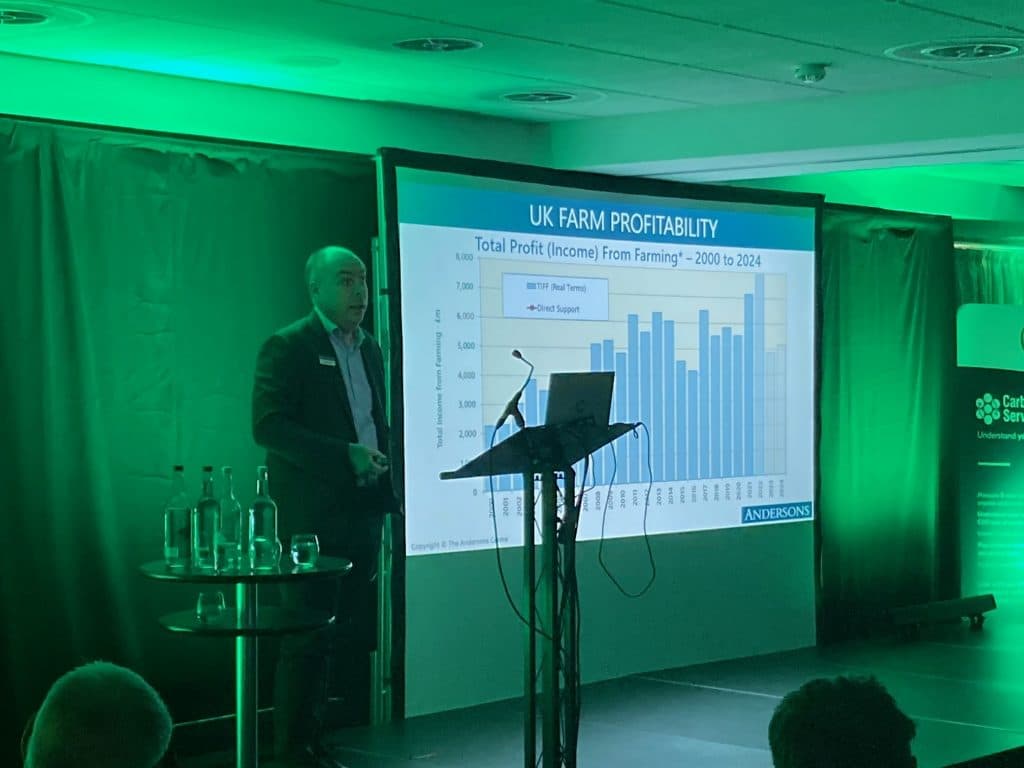Scheme is opportunity to boost farm income growers told – Anglia Farmer
Coverage from the Farmacy Conference - Farmers chasing much-needed additional income are again being urged to consider opportunities available under the Sustainable Farming Incentive (SFI) ...
Although Defra figures suggest more than 10,000 farmers in England have applied for the revised SFI since it opened last September, this is equivalent to only one-in-eight of all eligible growers and livestock producers.
As the SFI becomes more popular, there is a chance that Defra could reduce future payment rates for some options – especially if the government considers that targets are being met or the scheme is resulting in too much land taken out of production.
That could make it wise to join the scheme now.
“At the moment, the government is willing to pay for it – but over time, some of these measures may just become part of what farmers are expected to do.” said Richard King, partner at farm business consultants Andersons.
“Some of the support available right now – such as for soil or nutrient management plans for example – may well be there [only] to help farming reach a certain baseline of core environmental performance.”
Public good
The government’s farm support budget has remained unchanged since 2007. But it is only guaranteed until the end of the current parliament – which means it could be reduced following the general election which is expected this year.
“All the main political parties seem wedded to ‘public money for public goods’, so with the Basic Payment Scheme due to go completely by 2028, I doubt there will be much change in the overall direction of farm support – although we may well find some payment rates change.”
Mr King acknowledged that some farmers might want to wait for the launch of additional SFI options later this year – including support for variable rate applications and zero tillage, which are expected this summer.
“The detail for these options is still being worked on though, and we may see a staged approach to launching them, which means it could be a while before they’re available to the masses. But the best advice is to get in now rather than waiting for new options to come along.”
Addressing the popularity of the scheme, Mr King estimated that the amount of agricultural land being taken out of production and put into the SFI or other environmental options could increase from 3-4% to nearer 7-9% – excluding rough grazing.
While it was a significant amount, it was still a relatively small proportion of all farmland, and the focus was often on less productive areas, he noted.
Best options
Farmacy farm business consultant, Will Foyle also urged farmers to make the most of any funding while it was available. But it was important to select options that were right for each individual farm business, he added.
“The direction of travel is very much on farming with the environment, but use the SFI, and any other grant funding, to your advantage, considering how it best fits with your own farm.”
A good starting point was to examine variations in the cost of production on an individual field basis to identify any sub-marginal land that needed improving or may be better put to other uses, suggested Mr Foyle.
He highlighted the impact of varying winter wheat yield from 9 t/ha to 6.5 t/ha, which, in one example, resulted in an increase in the cost of production from £144/t to £187/t.
“If there are parts of a field that are regularly losing you money over different seasons and crops , you need to address that first. There might be ways to rectify the issues, or if not, consider other options, such as the SFI. The important thing is to do what’s right for your business.”
Farmers were also urged to be proactive and consider the bigger picture rather than focusing on just one bad crop or season. This is particularly so given the wet winter and spring which has left many growers unable to get crops in the ground.
Yield analysis over multiple years is a good indication of field performance. Costings, soil analysis and field maps of weeds, pests and diseases will help growers reach an informed decision before taking land out of production.
